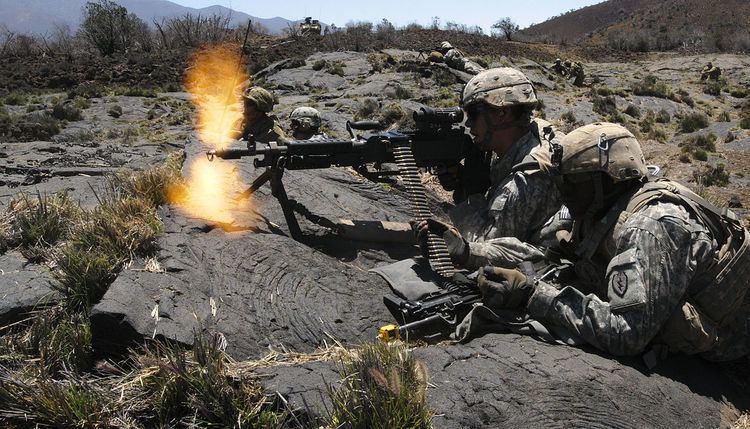 | ||
This page contains a list of military tactics.
Contents
The meaning of the phase is context sensitive, and has varied over time, like the difference between "strategy" and "tactics".
General tactics
Eight classical maneuvers of warfare
- Penetration of the Center: This involves the creation of a gap in the enemy line and its exploitation. Two ways of accomplishing this are separating enemy forces and using a reserve to exploit the gap that forms between them (e.g. Battle of Chaeronea (338 BC), the first recorded use of the penetration of the center) or having fast, elite forces smash at a specific point in the enemy line (an enemy weak spot or an area where your elites are at their best in striking power) and, while reserves and holding forces hold your opponent, drive quickly and immediately for the enemy's command or base (i.e., blitzkrieg).
- Attack from a defensive position: Establishing a strong defensive position from which to defend and attack your opponent. However, the defensive can become too passive and result in ultimate defeat (e.g., Siege of Alesia and the Battle of the Granicus).
- Single envelopment: A strong flank beating its opponent opposite and, with the aid of holding attacks, attack an opponent in the rear. Sometimes, the establishment of a strong, hidden force behind a weak flank will prevent your opponent from carrying out their own single envelopment (e.g., Battle of Rocroi).
- Double envelopment: Both flanks defeat their opponent opposite and launch a rear attack on the enemy center. Its most famous use was Hannibal's tactical masterpiece, the Battle of Cannae and was frequently used by the Wehrmacht on the Eastern Front of World War II.
- Attack in Oblique order: This involves placing your flanks in a slanted fashion (refusing one's flank) or giving a vast part of your force to a single flank (e.g., Battle of Leuthen). The latter can be disastarous, however, due to the imbalance of force.
- Feigned Retreat: Having a frontal force fake a retreat, drawing the opponent in pursuit and then launching an assault with strong, hidden forces. If morale is not high enough, your feigned retreat may rapidly become a real one.
- Indirect Approach: Having a minority of your force demonstrate in front of your opponent while the majority of your force advance from a hidden area and attack the enemy in the rear or flank (e.g., Battle of Chancellorsville).
- Crossing the "T", a classic naval maneuver which maximizes one side's offensive firepower while minimizing that of the opposing force.
Deception
References
List of military tactics Wikipedia(Text) CC BY-SA
